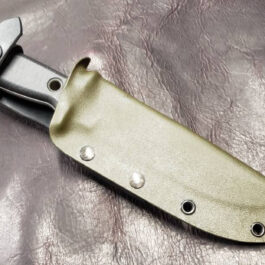
 Home foundations are a complicated process, and repairs can be costly. With climate change causing the soil to swell with rain while contracting during drought periods, homes in these areas run the risk of cracks and sloping floors which can lead to major structural damage over time or even total collapse without repair. Foundation problems usually stem from houses not fitting their frames properly because they were built on faulty ground; it is important for homeowners living in high-risk zones like this area to make constant checks that you aren’t about to meet your foundation’s demise any day now! Sticking to the basics can save you from a costly disaster. Preventative measures and maintenance for Foundation repair are critical in preventing your house’s foundation from cracking or sinking, while also keeping it waterproofed so mold doesn’t grow on square footage which is hard enough to keep clean without extra helpings of water penetration due to inefficient drainage. The first step is checking that there isn’t clogging whether, by leaves/debris buildup, roots from nearby trees touching underground pipes (it may be time t0 call an expert), or even small animals like squirrels burrowing into the ground around your property – all of these will eventually cause irreversible damage if left unchecked! Once any potential obstacles have been properly cleared out use techniques such as using a soaker.
Home foundations are a complicated process, and repairs can be costly. With climate change causing the soil to swell with rain while contracting during drought periods, homes in these areas run the risk of cracks and sloping floors which can lead to major structural damage over time or even total collapse without repair. Foundation problems usually stem from houses not fitting their frames properly because they were built on faulty ground; it is important for homeowners living in high-risk zones like this area to make constant checks that you aren’t about to meet your foundation’s demise any day now! Sticking to the basics can save you from a costly disaster. Preventative measures and maintenance for Foundation repair are critical in preventing your house’s foundation from cracking or sinking, while also keeping it waterproofed so mold doesn’t grow on square footage which is hard enough to keep clean without extra helpings of water penetration due to inefficient drainage. The first step is checking that there isn’t clogging whether, by leaves/debris buildup, roots from nearby trees touching underground pipes (it may be time t0 call an expert), or even small animals like squirrels burrowing into the ground around your property – all of these will eventually cause irreversible damage if left unchecked! Once any potential obstacles have been properly cleared out use techniques such as using a soaker.  Your roof is the most important part of your house for protecting everything else in it from the elements. When you notice any leaks, missing shingles, or other signs that repair work might be needed, call a professional immediately to get things fixed quickly before more damage occurs inside and out. It’s not cheap though; expect an average cost of around $650 for partial repairs up to $6K for replacing all tiles! Preventative measures include getting annual inspections by professionals every ten years after installation with follow-up maintenance inspections between those times as well (3-5 annually). Heating and AC repairs are expensive, but they’re even more frustrating when you need the system to work most; because it is in this time of year that your heating or air conditioning unit will be working its hardest. Signs of a problem include not being able to cool or heat effectively, seeing signs of leakages from your vents – which can indicate mold growth – as well as strange sounds coming from inside the machine. If these issues happen during summer months with high humidity levels (temperatures over 80 degrees), then there’s an increased risk for condensation accumulation on refrigerant lines and connections due to environmental conditions such as rainstorms or higher-than-normal outdoor temperatures than what would typically cause formation under average operating conditions. Electrical problems can be a major risk to your safety and even the lives of others. They are also inconvenient when they hinder our electricity from working properly in homes, buildings, or industrial complexes. Inspecting these systems annually is the best possible option for prevention as it helps identify any issues before they become dangerous- but if you do find yourself dealing with an electrical issue that needs to be fixed immediately there’s no need to worry! Hiring professionals like electricians will guarantee competent work so make sure you have their number handy just in case something happens at home or on the job site due out next time you might need them. - What if you’re not able to prevent problems from happening? You can avoid a lot of the most costly home repairs by doing your due diligence with preventive maintenance. But even when we do our best, there are still times where big, expensive repairs are unavoidable – and that’s why it pays off to have Home Insurance in place before disaster strikes! It doesn’t matter whether or not you’ve been diligent about prevention- what matters is how well insurance covers these costs for us. The first call should be made quickly after an accident happens this way any necessary cleanup will happen right away too instead of waiting until later on as some people might do – bad idea.
Your roof is the most important part of your house for protecting everything else in it from the elements. When you notice any leaks, missing shingles, or other signs that repair work might be needed, call a professional immediately to get things fixed quickly before more damage occurs inside and out. It’s not cheap though; expect an average cost of around $650 for partial repairs up to $6K for replacing all tiles! Preventative measures include getting annual inspections by professionals every ten years after installation with follow-up maintenance inspections between those times as well (3-5 annually). Heating and AC repairs are expensive, but they’re even more frustrating when you need the system to work most; because it is in this time of year that your heating or air conditioning unit will be working its hardest. Signs of a problem include not being able to cool or heat effectively, seeing signs of leakages from your vents – which can indicate mold growth – as well as strange sounds coming from inside the machine. If these issues happen during summer months with high humidity levels (temperatures over 80 degrees), then there’s an increased risk for condensation accumulation on refrigerant lines and connections due to environmental conditions such as rainstorms or higher-than-normal outdoor temperatures than what would typically cause formation under average operating conditions. Electrical problems can be a major risk to your safety and even the lives of others. They are also inconvenient when they hinder our electricity from working properly in homes, buildings, or industrial complexes. Inspecting these systems annually is the best possible option for prevention as it helps identify any issues before they become dangerous- but if you do find yourself dealing with an electrical issue that needs to be fixed immediately there’s no need to worry! Hiring professionals like electricians will guarantee competent work so make sure you have their number handy just in case something happens at home or on the job site due out next time you might need them. - What if you’re not able to prevent problems from happening? You can avoid a lot of the most costly home repairs by doing your due diligence with preventive maintenance. But even when we do our best, there are still times where big, expensive repairs are unavoidable – and that’s why it pays off to have Home Insurance in place before disaster strikes! It doesn’t matter whether or not you’ve been diligent about prevention- what matters is how well insurance covers these costs for us. The first call should be made quickly after an accident happens this way any necessary cleanup will happen right away too instead of waiting until later on as some people might do – bad idea.
What are the hidden expenses of homeownership?
Categories:

